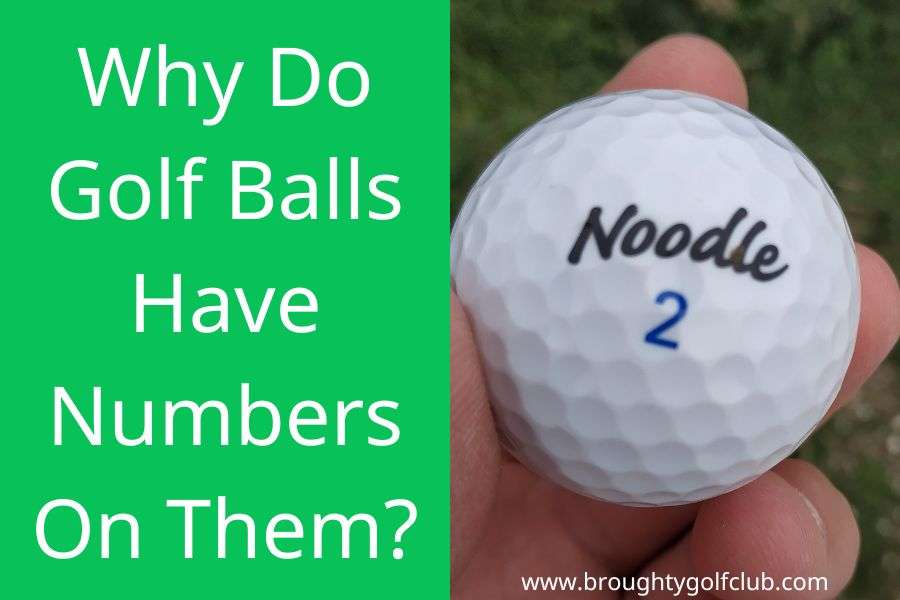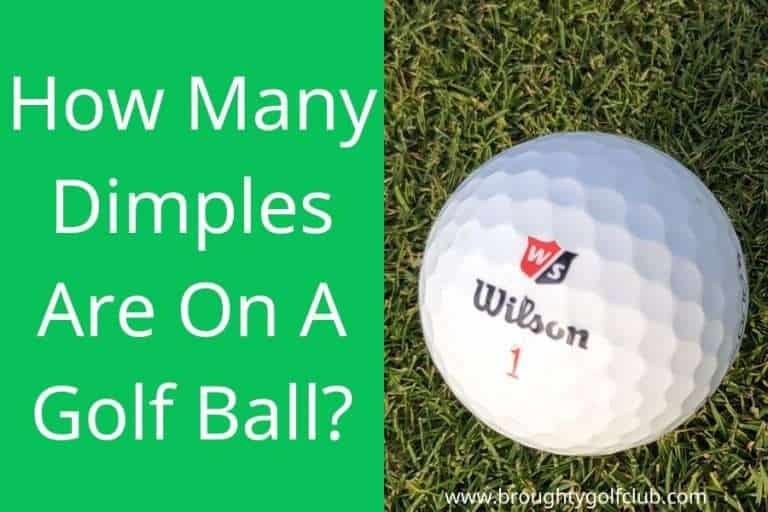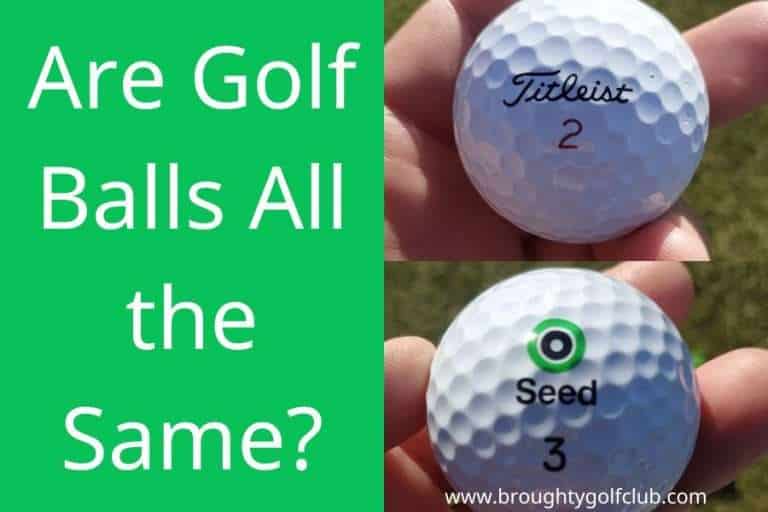Why Do Golf Balls Have Numbers On Them?
You might have wondered what the numbers on golf balls mean or whether they mean anything at all!
In this article, I’ll run you through the reasons behind the numbers on a golf ball.
Reasons For Numbers On A Golf Ball
The primary reason that a golf ball has numbers on is that they are there to help golfers identify the ball.
Traditionally manufacturers printed the numbers 1 to 4 on each sleeve of three balls they included in a box of a dozen.
This is usually the largest number under the name of the manufacturer. If everybody in your group is playing a Pro V1 then you could each choose a different number to make it obvious which ball belongs to which player.
More recently ball companies have offered more personalization services for their products and several offer you the option to have higher numbers on your ball. Titleist for example will go as high as 99.
The other reason that you might find a two-digit number on the cover is in reference to the compression of the golf ball. A number of golf balls were available as either 90 or 100 compression rating and the manufacturer would have that number printed on the ball.
Modern golf balls rarely if ever have their compression displayed as manufacturers have decided that emphasizing a particular compression rate can be confusing to golfers.
One company famously decided to use a different identification method for their balls. Some years ago the Penfold Ace golf ball was available with the four suits (hearts, diamonds, spades and clubs).
The next likely reason for numbers to be printed on a golf ball is to represent the number of dimples on the ball. For example, certain editions of the Titleist Pro V1 have had 392 printed on them since that was the number of dimples on the ball.
Another reason for numbers to be printed on the ball is if they form part of the model or brand name. For example the TP5 and Pro V1.
Are There Any Restrictions Regarding Numbers On Golf Balls?
There are no restrictions regarding what numbers can appear on golf balls. Golfers are free to use any combination of numbers on their golf balls. Some players prefer to use all odd numbers, while others use a mix of odd and even numbers. There is no right or wrong way to choose the numbers on your golf ball, so go with whatever feels best for you!
Some tour players can be quite superstitious about the numbers on the golf balls they use. Some will use a number 1 ball in the first round, a number 2 in the second etc. Some will only use odds or evens, others won’t use anything higher than a 4.
The equipment companies will often let them customize their ball with a lucky number. For example, Sergio Garcia had ’11’ printed on to honor the 11 times that his beloved Real Madrid had won the European Cup/Champions League.
Should I Add Identifying Markings on My Golf Balls?
Some golfers prefer to add markings to their golf balls so they can easily identify them, while others don’t bother. If you have a regular foursome then it might not be necessary to mark your balls. However, if you often play with different people or in tournaments, it would be helpful to mark your balls so you don’t accidentally end up using someone else’s ball. Ultimately, it’s up to you to decide whether or not to add identifying markings to their golf balls but you do need to be able to positively ID it. I’ve always added my own markings when I was playing in a competition to be on the safe side.
What Does The Color Of The Number On A Golf Ball Mean?
Most manufacturers will differentiate between different models in the same product line by using different colors for the identification number. Pro V1 balls have their identification number in black while Pro V1x is red.
Occasionally you might get something a little more out of the ordinary. Justin Rose managed to get balls with numbers in gold-colored paint after winning the Olympic medal in Rio de Janeiro.
Why Does My Golf Ball Have A Three Digit Number On It?
If you have a golf ball with a three-digit number on it then most likely that is referring to the number of dimples on the golf ball. For the first few years of production, the Pro V1 had 392 on the side because it had 392 dimples. If you happen to come across one with 392 on it then you know it was produced between 1999 and 2006. Probably best to leave one’s that old for the practice ball bag.
Why Does My Golf Ball Have A Two Digit Number On It?
Up until the last 20 years or so, it wasn’t unusual for ball companies to specify the compression rating of the ball on the cover. The Titleist Professional was available as a 90 or 100. The slightly softer ball would have 90 printed on it.
On modern golf balls, it is more likely to be purely an identification number since most manufacturers don’t bother advertising the compression much less print it on the golf ball
Why Does My Golf Ball Have A Single Digit Number On It?
Most ball manufacturers print a single-digit number on their balls purely for identification purposes. Lots of people like to play Titleist Pro V1 balls. In a typical box of 1 dozen, each sleeve would be printed with a 1, 2, 3 or 4.
This is a quick and easy way for you to avoid mixing up balls with your playing partners or yourself if you are playing multiple balls!
What Are X-Out Golf Balls?
X-Out (XXXX-Out) golf balls are imperfect balls that are sold off cheaply by golf ball manufacturers. Something has gone wrong during the production process which means the ball is not considered good enough for normal retail channels. More often than not this is merely an aesthetic reason such as the brand name or logo has been printed incorrectly. If you are playing in a competition where the organizers have adopted the local rule that all players use balls on the conforming list then you can’t use such a ball.
If there is no clear evidence that the ball does not conform to the rules of golf then you could use it where the conforming ball list rule is not in effect.
Why Do Golf Balls Have Numbers On Them: Conclusion
Hopefully that’s cleared up any confusion you have on the reasons for numbers being printed on the cover of a golf ball.








